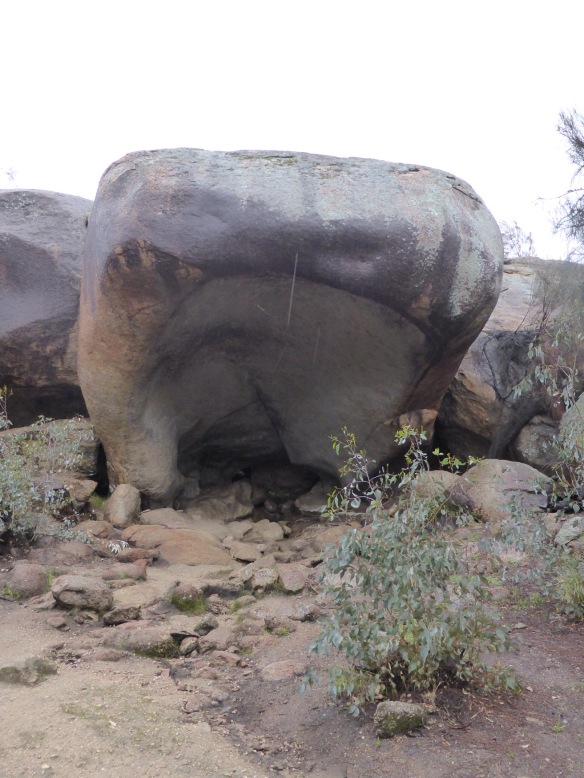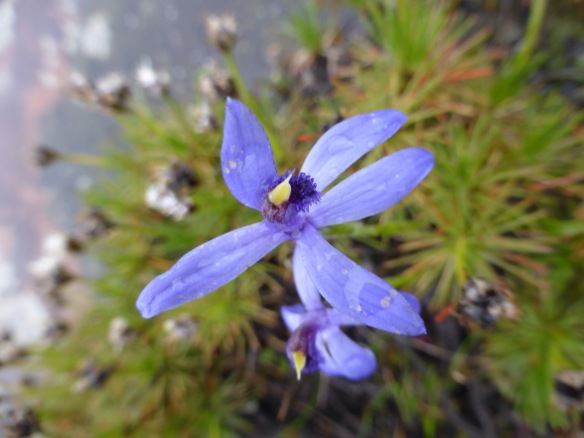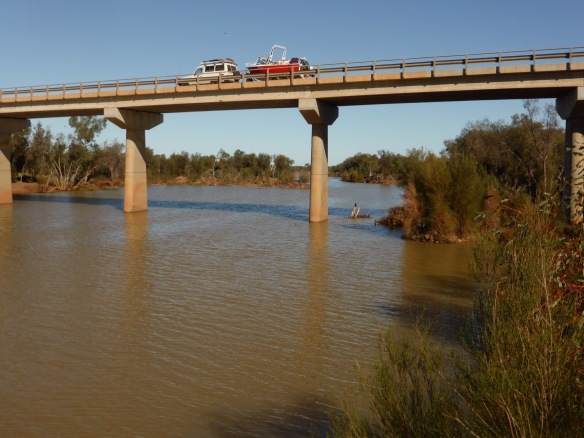Today it has rained seriously from morn till night. Despite this, we walked to Hippo rock, a short distance from the camping ground at Wave Rock. The track was wet.
We drove past soggy emerald green wheat fields and stopped for lunch at Pallarup Nature Reserve. After beef and noodle soup with cheese toastie, the rain abated briefly leaving great conditions for a photo shoot, with raindrops dripping from wildflowers and creeklets flowing over the granite rocks. We saw our first orchid – sorry the photo is on an unconventional angle – as it was I had to lean over double to avoid damaging it or its neighbours.
The picture below is Hippo Rock, Hyden, this morning. 
Here are two random photos of mallee plants in the rain.
We are now at the southern port of Hopetoun. To reward ourselves for spending a day in the rain, we decided to have dinner at the pub. The meal was fantastic, but it took us 20 minutes to find our way out of the caravan park, which is an absolute maze!











































